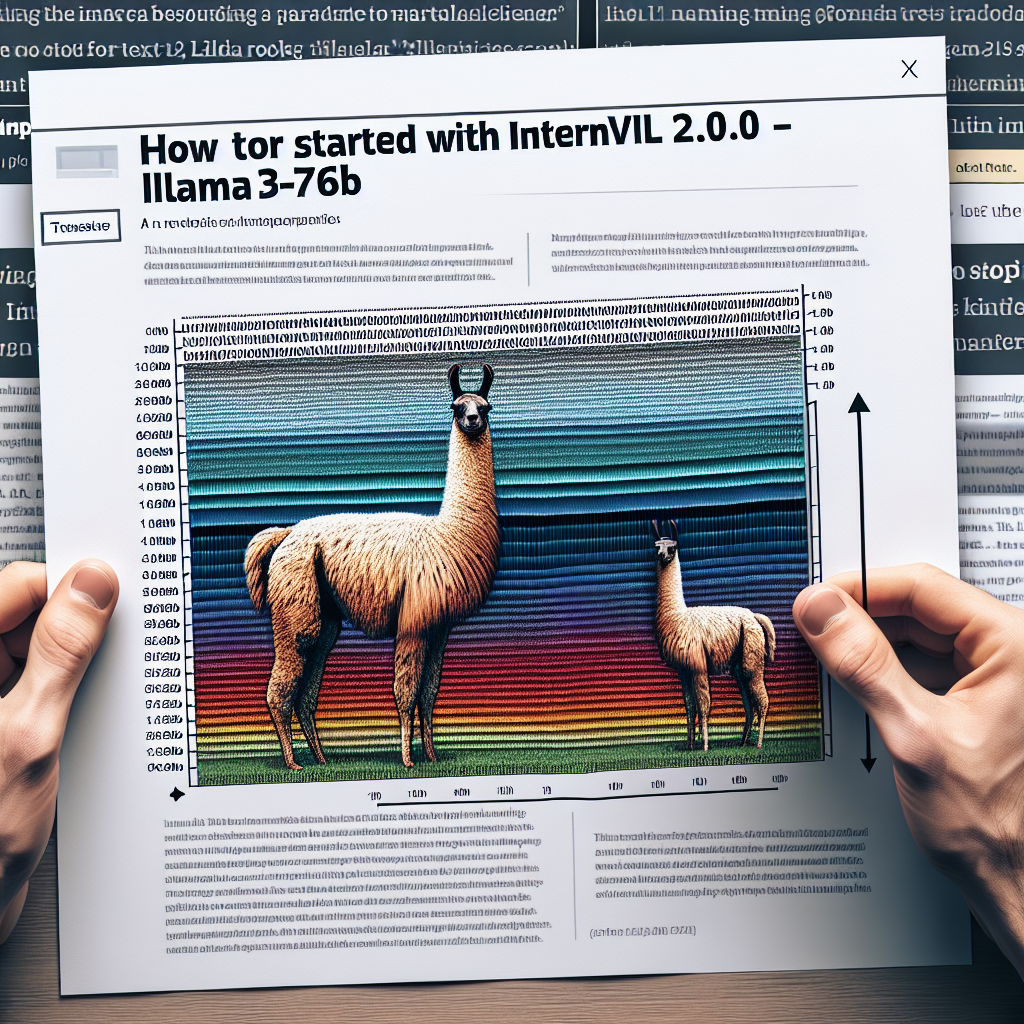Welcome to your comprehensive guide on using InternVL 2.0, specifically focusing on the InternVL2-Llama3-76B model! Whether you’re developing multimodal applications that require advanced image and text comprehension or looking to harness the power of this state-of-the-art model, this article aims to make your journey seamless and productive.
What is InternVL 2.0?
InternVL 2.0 is the latest version in the InternVL series of multimodal large language models. It has a remarkable capacity, featuring parameter sizes ranging from 1 billion to a staggering 108 billion. The InternVL2-Llama3-76B model stands out as a top performer and is capable of understanding complex inputs, such as long texts and multiple images, making it highly versatile for various tasks—including document comprehension and scene text understanding.
But let’s simplify things with an analogy: imagine this model as a skilled translator who can effortlessly interpret not just text, but also images and videos, bridging the gap between languages and visual content.
Getting Started with InternVL2-Llama3-76B
To kick things off, follow these straightforward steps to use the model in your applications.
1. Setup Requirements
Before proceeding, ensure that you have the right environment. Install the necessary Python libraries, particularly the `transformers` library. It is best to use version `4.37.2` for full compatibility.
pip install transformers==4.37.2
2. Model Loading
You can load the InternVL2-Llama3-76B model using the following code snippets tailored to your computational needs.
#### 16-bit (bf16 / fp16)
For a reduced memory footprint while maintaining performance, use this option:
import torch
from transformers import AutoModel
path = "OpenGVLab/InternVL2-Llama3-76B"
model = AutoModel.from_pretrained(
path,
torch_dtype=torch.bfloat16,
low_cpu_mem_usage=True,
trust_remote_code=True,
).eval().cuda()
#### BNB 8-bit Quantization
Alternatively, to further optimize the usage of memory, you can employ 8-bit quantization.
model = AutoModel.from_pretrained(
path,
torch_dtype=torch.bfloat16,
load_in_8bit=True,
low_cpu_mem_usage=True,
trust_remote_code=True,
).eval()
> ⚠️ Warning: Avoid using BNB 4-bit quantization as it leads to substantial errors, rendering the model incapable of coherent image comprehension.
Understanding Inference and Conversations
Once your model is loaded, you can initiate conversations by issuing various prompts. The model supports intricate multi-round dialogues with images.
Example Dialogue with a Single Image
For single-image interactions, utilize the following format:
question = '\nPlease describe the image shortly.'
response = model.chat(tokenizer, pixel_values, question, generation_config)
print(f'User: {question}\nAssistant: {response}')
Multi-Image Dialogues
If you’re working with multiple images, simply concatenate the pixel values of the images to facilitate complex queries about them.
pixel_values1 = load_image('./examples/image1.jpg', max_num=12).to(torch.bfloat16).cuda()
pixel_values2 = load_image('./examples/image2.jpg', max_num=12).to(torch.bfloat16).cuda()
pixel_values = torch.cat((pixel_values1, pixel_values2), dim=0)
question = '\nDescribe the two images in detail.'
response = model.chat(tokenizer, pixel_values, question, generation_config)
print(f'User: {question}\nAssistant: {response}')
Troubleshooting Tips
While working with the InternVL 2.0 model, you might encounter some common issues. Here are a few troubleshooting ideas to help you resolve them:
– Out of Memory Errors: Double-check that your system has sufficient GPU memory for the model size you are using. Consider using quantization to reduce memory requirements.
– Invalid Image Formats: Ensure images are in a compatible format (e.g., PNG, JPG) and properly pre-processed before sending them to the model.
– Version Conflicts: Maintaining the correct version of all essential libraries is crucial. Revert to the specified version of `transformers` if you face compatibility issues.
For more troubleshooting questions/issues, contact our fxis.ai data scientist expert team.
Conclusion
Congratulations! You now have the foundational knowledge and steps needed to operate the InternVL2-Llama3-76B model effectively. This cutting-edge multimodal model opens up a world of possibilities for processing and interpreting both textual and visual data. As you delve deeper, feel free to explore more applications it can enrich within your projects.
Happy coding!

